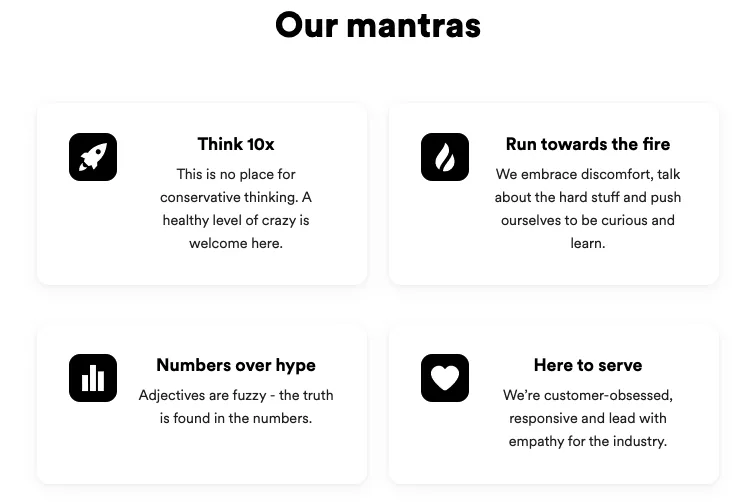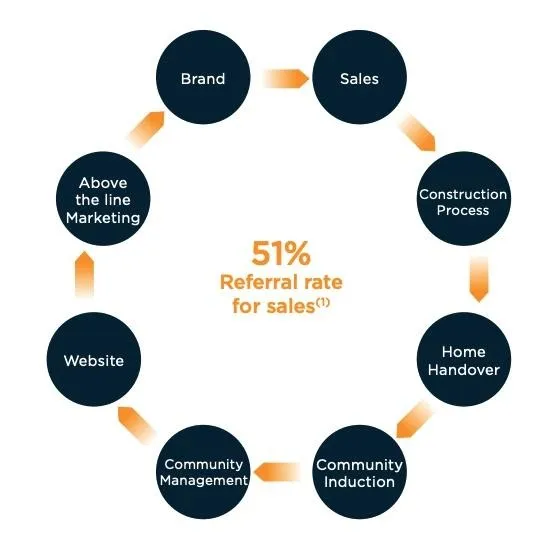Most companies see themselves as customer-centric, but the majority of them are mistaken.
Customer centricity means putting the customer at the centre of everything a business does. It involves building a deep understanding and empathy with a select group of customers, promoting customer loyalty.
This approach has a growing appeal due to technology, social media, and the internet increasingly empowering customers. Benefits include increased customer retention, efficiency and employee engagement.
Customer centricity is especially important for startups given the need to induce customers to try their new products or services.
As such, in this article, I will explain what customer centricity is, how it can give startups an advantage, and how it plays out in the real world.
What is customer centricity?
While there are various definitions of customer-centricity, it can broadly be thought of as putting the customer at the centre of everything the business does.
In his book Customer Centricity, Wharton Professor and entrepreneur Peter Fader defines it as a "strategy that aligns a company’s development and delivery of its products and services with the current and future needs of a select set of customers in order to maximise their long term financial value to the firm".
Some principles of customer-centric companies include:
- Targeted user segments: the ability to segment and focus the business on a specific group of customers;
- Customer empathy: seeing the problem from the customer’s point of view and identifying underlying customer needs; and
- Complete customer experience: moving beyond a transactional mentality to create a complete customer experience and prioritise customer success.
Customer-centric businesses benefit from premium pricing and repeat purchases or cross-selling from increased customer loyalty.
While most firms would like to consider themselves as customer-centric, the CMO Council found that only 14% of marketers saw their firms as customer-centric.
Historically, most businesses are product-centric, where the business is organised around its products: create a product, market the product, sell the product, repeat.
These businesses aim to maximise profits through volume and market share gains. This is achieved through expanding into new markets and developing new products or product line extensions.
While there are many examples of successful product-centric companies (for example, Coke), this approach is coming under increasing pressure.
Key points
- Customer centricity means putting the customer at the centre of everything a business does.
- This includes choosing a select group of customers, having the empathy to see the problem from their point of view and building relationships beyond the first transaction.
- Historically, most companies tend to be product-centric though the appeal of customer centricity is increasing.
A case for customer centricity
There has been an increasing flow of market power from suppliers/producers to customers.
This is because technology, social media and the internet have:
- Created shorter product cycles, reducing the time a business can benefit from a technological edge before the competition catches up; and
- Created better-informed customers and raised their expectations.
Accordingly, a survey of nearly 1300 executives by Qualtrics found that companies with superior customer experiences outperformed on revenue growth and profitability.
Here are some specific ways that customer centricity can benefit a business.
- Increased customer retention: Hubspot research found that 93% of customers were more likely to be repeat purchasers at companies with excellent customer service. Acquiring a new customer is many times more expensive than retaining an existing one.
- Increased efficiency: happy customers are more likely to promote the brand, thus resulting in more efficient customer acquisition. Additionally, unhappy customers can be expensive due to higher support costs and more product returns.
- Improved employee engagement: employees are more likely to feel connected to an organisation that cares about its customers. Accordingly, a Survey Monkey study found that customer-centric cultures result in less employee attrition. The benefits can be significant as workforce researcher Work Institute estimates that it costs as much as 33% of a worker’s salary to replace them.
Customer centricity is of particular importance to startups.
As SquarePeg Co-founder Paul Bassat points out, startups usually need to provide a significantly superior solution to convince a customer to switch from their current supplier.
Startups, therefore, require an obsessive customer focus to survive. This gives them an edge against incumbents focused on profitability and merely maintaining their positions.
This view is mirrored by Linkedin Co-founder Reid Hoffman, who believes it is more important to have 100 people who love the startup’s product than 1 million people who just sort of like it.
Y Combinator Co-founder Paul Graham stated: "Build something a tiny cohort of users will love. Love is all you need."
As such, the case for customer centricity is compelling and becoming more so.
Key points
- The appeal of customer centricity is increasing as technology, social media, and the internet have empowered customers.
- Benefits from customer centricity include increased retention, efficiency and employee engagement.
- Customer centricity is critical for startups as an obsessive customer focus is needed to produce the superior experience required to switch to the startup’s solution.
Some examples from my journey
In a Harvard Business Review article, brand positioning speaker and author Denise Lee Yohn describes leadership and culture as critical customer-centric attributes.
Having had the opportunity to come across numerous customer-centric businesses in my investment journey, I'd like to highlight some that do leadership and culture particularly well, with a specific focus on leadership, corporate values, the transparency of customer feedback, data and the complete customer experience.
Example #1: Leadership
Company leadership needs to have a strong commitment to customer-centricity, and I’ve found that this often stems from the journey and mission of the founder. As Brian Armstrong, Co-Founder and CEO of Coinbase, said on a Bankless podcast: "If we don’t accomplish the mission, what’s the point?"
Online beauty retailer Adore Beauty is a great example of this.
Co-Founder Kate Morris started the business with $12,000 borrowed from her partner's parents. With limited funds for marketing, designed a customer-centric offer that recognised the personal nature of the beauty category by providing her customers with the information to select the best products for themselves. Along with including a chocolate Tim-Tam with every delivery, this was a far superior experience to that of department stores at the time.
The positive word of mouth this generated fuelled her business’s growth.
Two decades later, Adore Beauty’s customer-centricity continues to be fuelled by accessible information, community and the iconic Tim-Tam.

Example #2: Corporate values
In a previous Venture Journeys article, I wrote about the importance of corporate values in guiding employee behaviour and focus.
Hospitality ordering and payments platform Mr Yum is an example of a business with a clear set of values, including one which prioritises customer obsession.
As a result, 80% of team members are in product or support roles rather than sales, and the average response time is under two minutes.

Example #3: Transparency of customer feedback
Linktree is a tool that connects followers to a creator’s entire online presence via a single link. It is a delightfully simple solution, and I have enjoyed using the product.
Having high-profile clients — such as Coldplay — among their 18 million users requires them to put the customer at the centre of everything they do.
This includes a high level of transparency on customer feedback. Their customer support and customer success teams regularly provide feedback from customers to other departments in the business — such as marketing, engineering and growth.
As a result, the voice of the customer continues to be heard throughout the business even as it scales rapidly.
Example #4: Customer data
Peter Fader sees collecting and analysing customer data as key to customer centricity as it allows the business to segment and identify their most valuable customers and target or nurture them appropriately.
Adore Beauty gives a good illustration of this; it has one of Australia’s largest proprietary beauty datasets and has previously invested in recreating the in-store experience online using data. It also continues to leverage its dataset by rolling out a loyalty program (the Adore Society) which will give further insights into segmenting its most valuable users.
Example #5: A complete customer experience
Lifestyle Communities builds and runs land-lease housing communities for Australians over the age of 50.
Founder James Kelly has always placed his homeowner customers at the centre of his business, and the Lifestyle Communities experience goes beyond transactional home sales.
James has implemented a strategy aiming to surprise and delight customers at each touchpoint, from the initial sales process (pre-sale) to settlement of the home (sale) to onboarding customers into an active community (post-sale outcome).
This approach has resulted in high referral rates, which has fuelled significant growth for the business.
I had the chance to experience this for myself when I took my parents (who acted as mystery buyers) to their village in Officer, Melbourne, a few years ago.
My parents had a great experience. The sales consultant patiently listened to their concerns and answered all their questions. They were also blown away by the product, which they said ‘feels like a home’.

Key points
- Customer centricity requires a commitment from corporate leadership and an open culture of customer obsession, allowing the voice of the customer to be heard across the business.
- Collecting and analysing customer data allows a business to identify its most valuable customers to target and nurture.
- Building great experiences before, during and after a sale allows a business to surprise and delight customers, resulting in positive word of mouth or referral rates.






.jpg)

